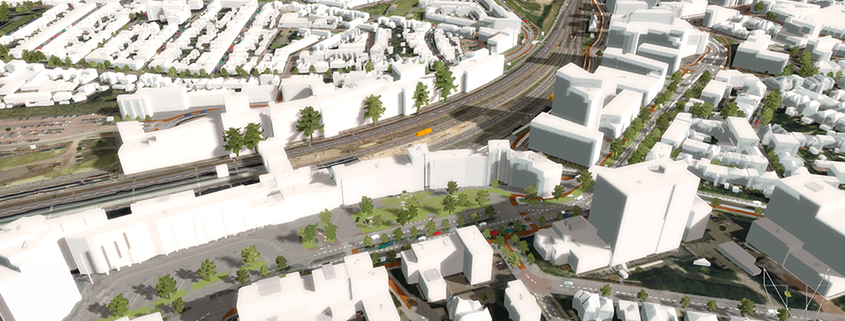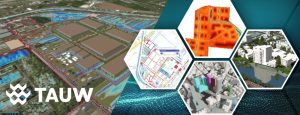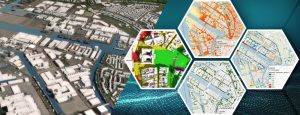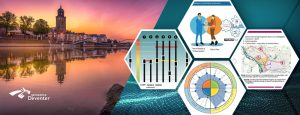It’s getting warmer and drier. Rain showers are getting shorter and heavier. It is a reason for the municipality of Amersfoort to take a good look at the design of the railway station area. The station area is centrally located in the city. A lot of people come here every day and it is an important part of the city’s economy and a central place for commuting between home and work.
The municipality would like to improve this important part of the city and make it climate adaptive. For this purpose, an area plan has been drawn up.
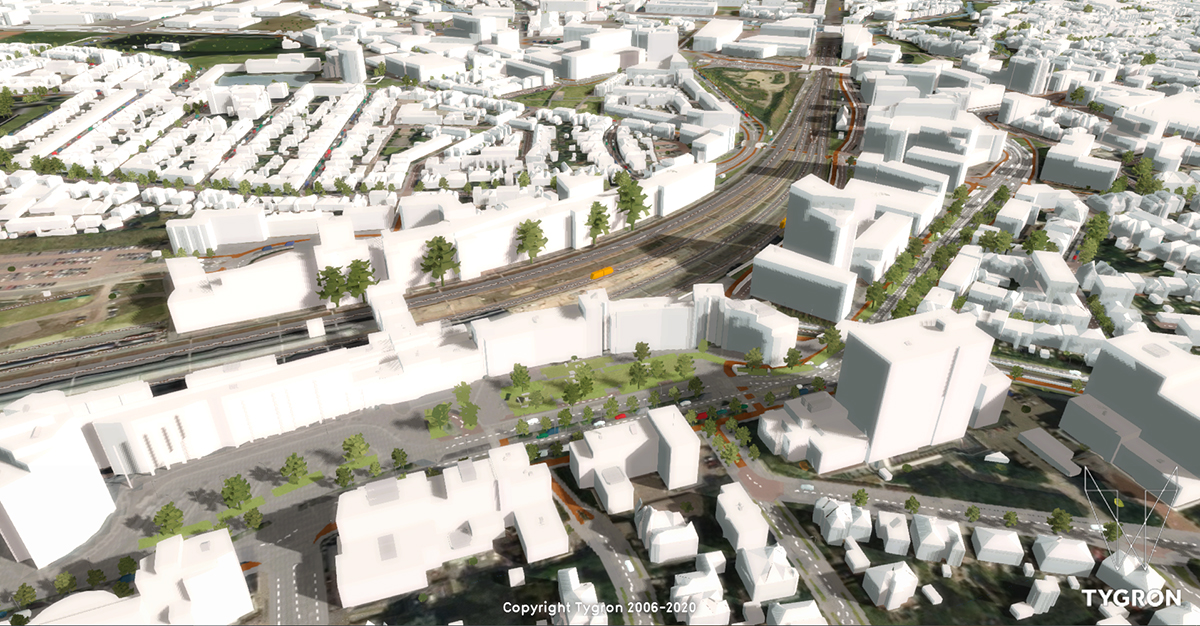
How effective is the vision that the municipality has for the area? How do we keep the station area of Amersfoort liveable during a heat wave? How can we keep the station of Amersfoort accessible during an extreme rain shower?
Workshop EU project SCOREwater
These questions were central to the workshop as part of the SCOREwater project. SCOREwater (www.scorewater.eu) is an H2020 project in which different stakeholders in three cities in Europe (Amersfoort, Barcelona and Gothenburg) work together to deploy and develop digital tools for making cities climate adaptive.
In the workshop, the municipality of Amersfoort, the Vallei and Veluwe Water Board looked together with Tygron into how big data, smart algorithms and a Digital Twin can help achieve better, integrated decision-making. The central topic was the climate-adaptive design of the Amersfoort railway station area, taking into account accessibility, quality of life and employment.
The climate-adaptive design of the station area should go hand in hand with important themes such as accessibility, quality of life and employment. And when different subjects come together, several departments of the municipality are involved. When different departments are involved, the complexity increases, because multiple goals, means and criteria come together in the same area.
In the workshop, we jointly worked out a number of objective criteria against which the future layout of the station area can be tested. This resulted in a number of quantitative objectives with regard to the future layout of the area, including:
- In case of a T=100 storm, the station must remain accessible for passengers via a path of at least 10m in width. This sort of a rainfall can occur once every 100 years.
- To reduce heat stress, the PET must drop 10 degrees Celsius. PET is a standardised representation of the degree of heat stress experienced by an average person.
- The green/pavement ratio must be 50%
Analysis of climate adaptivity with digital twin.
The criteria for a climate adaptive design are built into the Tygron Platform. With the help of the platform a Digital Twin has been made of the station area. The software does this on the basis of geographical information about the terrain, buildings and land use. Here you can see a video of the Digital Twin of the Station Area.
Subsequently, a number of designs were tested to see whether they meet these criteria. In the Digital Twin, a T=100 shower was simulated. In the simulation of the course of the rainstorm, it can be seen that the water flows from the hill to the much lower station area and puddles arise there. For more information about the water module in Tygron, read here.
The heat stress module has been used to calculate the wind chill temperature on an extremely hot day, as happened a few times in the summer of 2019. For more information about the heat stress module in Tygron, read here.
It is well visible how much shade and cooling is provided in the plan of the Station area by the trees. One of the key performance indicators is the “green indicator”. This shows the ratio of green and grey (paving). One of the objectives was to achieve 50%. The analysis with the digital twin shows that the new vision achieves this goal.
